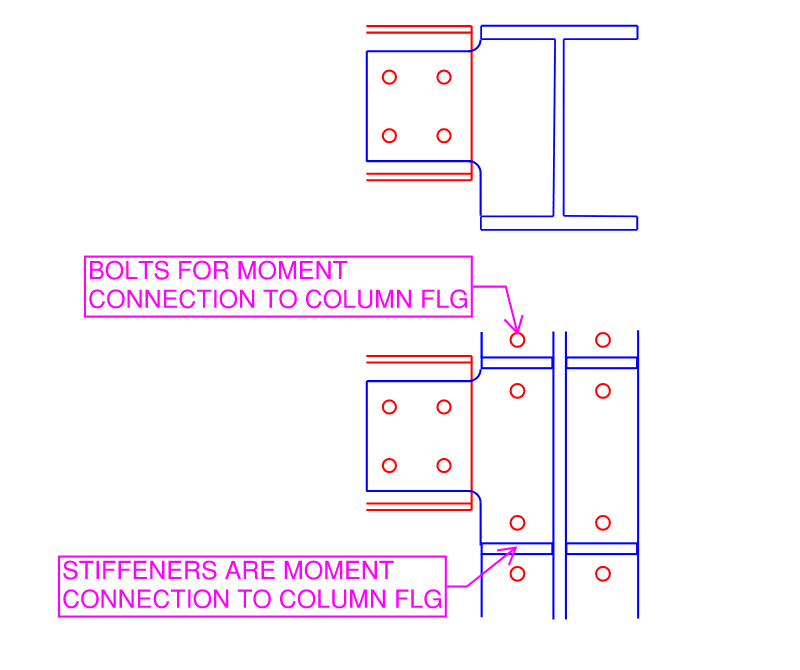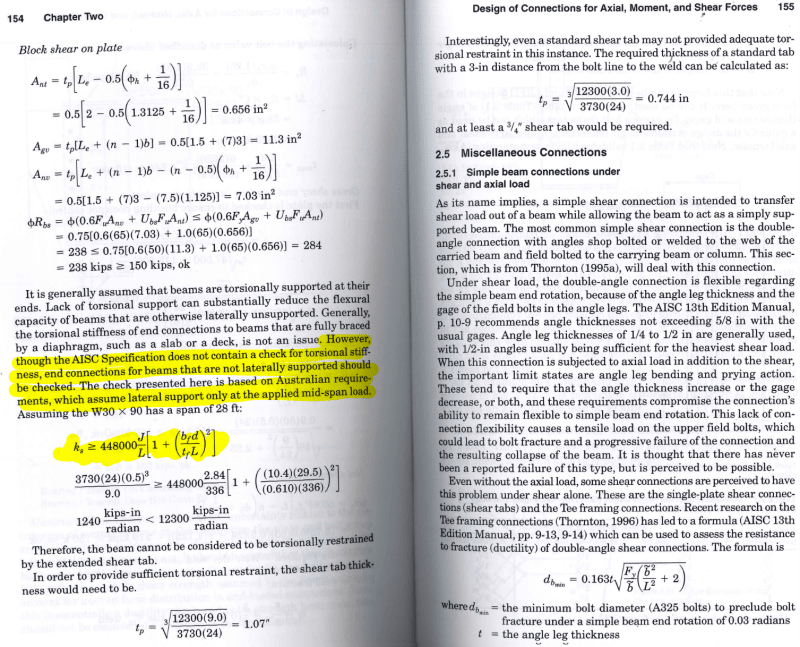Thanks for everyone's reply and discussions.
WARose said:
That's sort of contradictory. Not required for what then? The tab itself? The beam that the tab is framing into?
As phamENG has further elaborated the situation in my question (Thanks phamENG), I actually do not want to introduce any bracing to the beam or at the connection. I think I should explain a little more precisely. In Canada, fabricator's engineers design the connections. So when the structural consultant design the beams, I believe they would have assumed that the beam is supported by a connection that is torsionally stiff enough. AISC design procedure assume that the end of the beam is braced as stated in Larry Muir's article,
A Shear Connection Extends Its Reach.
"If the end of the beam is not braced, is the design procedure in Part 10 still applicable?
No. The design procedure assumes that the end of the beam is braced. The beam can be braced by an actual brace or by the slab, deck or other suitable means. The cope checks in Part 9 of the Manual also assume that the cope is braced at both ends of the cope. This has always been the case and has been clarified in the 15th Edition Manual. Since the design procedure for the extended single-plate shear connection references the cope checks, it must satisfy the same assumptions. Also, as stated previously, if the flexural strength of the beam is to be determined using Chapter F of the Specification, then there must be adequate torsional restraint at the supports. If the beam is not braced at its end, then the strength and stiffness of the plate must be evaluated. If there is insufficient strength and/or stiffness, then this must be accounted for in the design of the beam.
Neither the Specification nor the Manual address this problem.
If my beam is not sufficiently braced at the end, should I opt for a torsionally stiff connection configuration?
Yes, but there may also be other considerations. Bracing is not mentioned in the Manual for any of the other shear connections discussed in Part 10. It has long been established practice to provide a connection that is at least half the depth of the beam and implicitly assume that there is sufficient torsional restraint. However, the presence of a cope could invalidate this assumption. Also, as stated previously, the cope checks in Part 9 assume a brace point at the end of the cope. Even the strongest and stiffest connection will not provide sufficient restraint if it attaches to a coped section that does not possess sufficient strength and stiffness.
"
Since shear tab is economical and for some situations, like the second sketch in my 1st post, extended shear tab is almost the only option available to easily connect the beam to the column's web, therefore, I would like to establish a check for torsional stiffness of the shear tab to meet the requirement that there is adequate torsional restraint at the support instead of bracing the beam ends. Hopes this further clarifies the situation.


